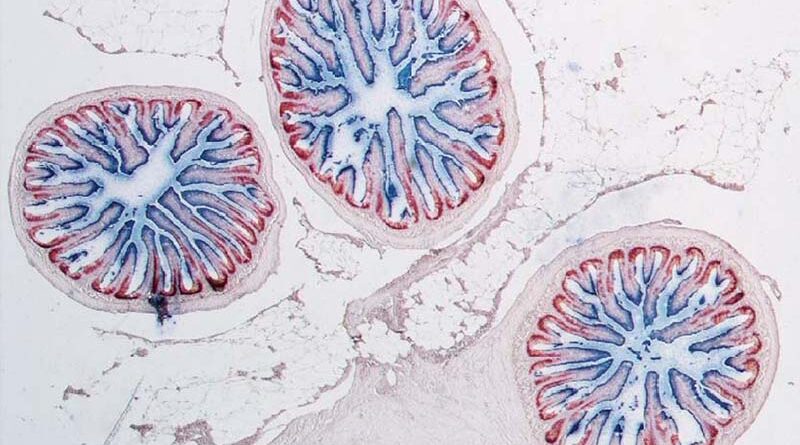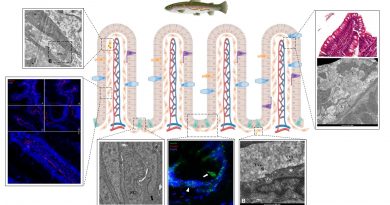AQUACULTURE AND SUSTAINABLE FEED: NEW INSIGHTS ON MORPHOLOGY AND PHYSIOLOGY OF THE RAINBOW TROUT INTESTINE
For the first time, it has been observed that in the trout intestine, the parts where digestion and absorption take place do not follow each other in a linear way as normally observed in mammals. To accelerate the development of novel feed formulations, aquafeed industry requires an increasingly detailed morphological and physiological intestinal knowledge. Alternatives to fishmeal-based feed that do not compromise animal welfare and growth performances are required to increase the sustainability of rainbow trout farming. With this publication, the research group led by Fulvio Gandolfi professor at DiSAA, in collaboration with the Skretting Aquaculture Research Centre, studied in detailed the rainbow trout intestine, along its development in standardized farming conditions. The results will have important repercussions for determining the characteristics of the pellets intended for this species and for salmonids more generally. In addition, the accurate quantitative and qualitative data collected in this study provide the reference values needed for identifying novel markers for the evaluation of alternative feed effects f on the intestine.
Figure: Localization of proliferating cells at the base of the villi, stained in red using a specific antibody, whereas cells located along the villi and at their apex are fully differentiated and stained in blue due to the presence of alkaline phosphatase enzyme.
RREFERENCE AND LINK
Verdile N., Pasquariello R., Scolari M., Scirè G., Brevini T.A.L. and Gandolfi F. A detailed study of rainbow trout (Onchorhynchus mykiss) intestine revealed that digestive and absorptive functions are not linearly distributed along its length. Animals 2020, 10, 745; doi: 10.3390/ani10040745.
NOTE: The article is freely available at the following link: https://www.mdpi.com/2076-2615/10/4/745


